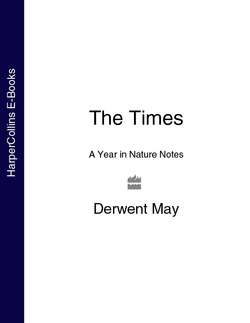Читать книгу The Times A Year in Nature Notes - Derwent May - Страница 59
22nd February
ОглавлениеSEVERAL GREAT WHITE egrets have been seen on marshes in the country recently. They have probably come over from the Dutch reedbeds. Their smaller relative, the little egret, has been breeding in Britain for several years, and is now becoming a familiar sight. It is a dainty, pure white heron and in summer has long white plumes on its breast. The great white egret is found in most parts of the world but, by contrast, is a very uncommon visitor here. It is a large, slow-flying bird, the size of our own heron. It too is pure white, but whereas the little egret has a black beak, the larger bird has a long yellow beak, and in the summer has flowing plumes on its back. When great white egrets are standing fishing, they also have a dramatic-looking kink in their long neck.
Drake teal are swimming round the females on secluded lakes, making soft but far-carrying whistles that can be heard across the reedbeds. They are showing off their fine plumage – especially their chestnut heads and bottle-green eye patches – in the hope of winning a mate. Even those teal that will be leaving next month for northern Europe like to pair up before they go.
